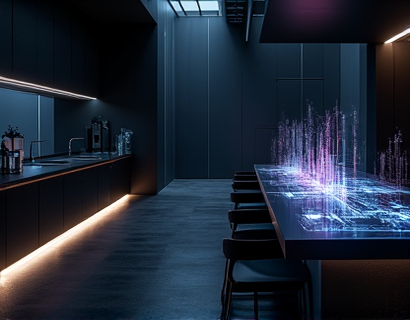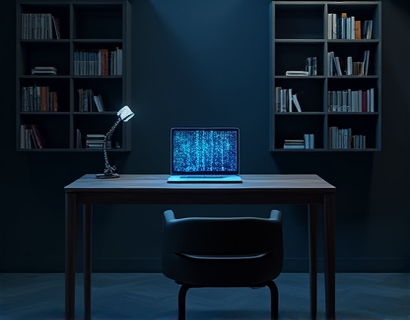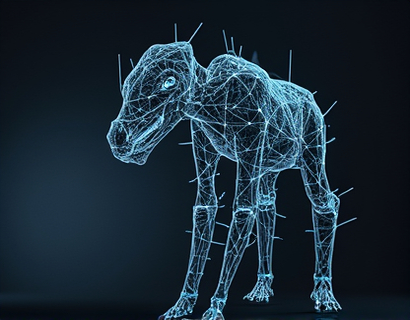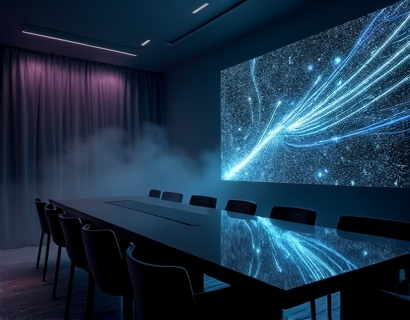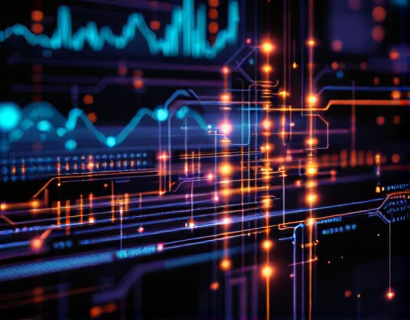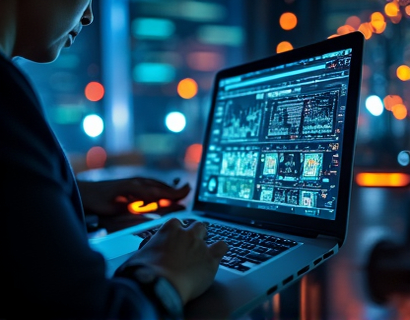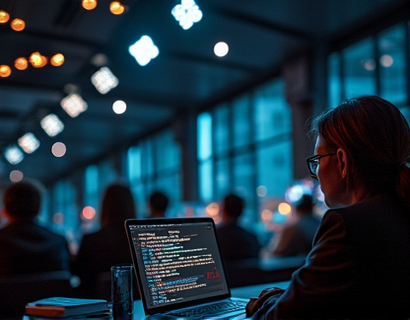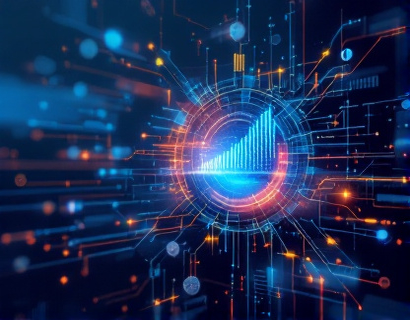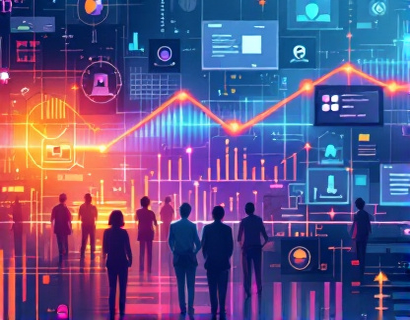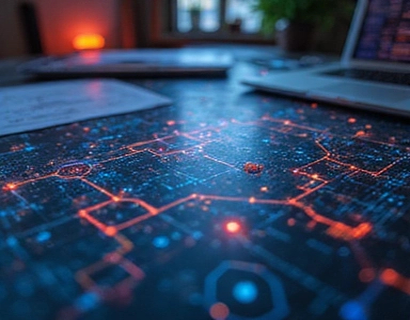Advanced AI Image Authentication: Ensuring Digital Content Integrity with Cutting-Edge Verification Technology
In an era where digital content is ubiquitous and easily manipulable, the need for robust image authentication has never been more critical. The rise of artificial intelligence (AI) has introduced sophisticated tools for creating and altering images, posing significant challenges to professionals across various fields. This article delves into the advanced software solutions designed to detect AI-generated and altered images, ensuring the authenticity and integrity of digital media. These tools are meticulously crafted to empower digital media professionals, content creators, brand managers, security analysts, legal and compliance teams, journalists, and educators to navigate the complexities of image manipulation and AI creation confidently.
The importance of verifying the authenticity of visual content cannot be overstated. In a world where deepfakes and AI-generated images can mislead and deceive, the ability to trust what we see online is paramount. This is especially true for brands, whose reputations can be severely damaged by the spread of altered or fake images. Advanced image authentication software provides a reliable method to verify visual content, safeguarding brands and enhancing informed decision-making processes.
Understanding Image Manipulation and AI-Generated Content
Image manipulation has evolved from basic photo editing to sophisticated AI-driven techniques. Traditional methods involved altering images using software like Adobe Photoshop, where experts could adjust pixels, add or remove elements, and create convincing alterations. However, with the advent of AI, the process has become more automated and harder to detect. AI algorithms can analyze vast amounts of data to generate realistic images and videos that are nearly indistinguishable from real ones.
Deepfakes, a subset of AI-generated content, are videos that have been altered using AI to make it appear as though a person said or did something they never actually did. These can be used for malicious purposes, such as spreading misinformation or damaging reputations. Similarly, AI-generated images, often referred to as "deep images," can be created to deceive visually, making it crucial to have tools that can detect these manipulations.
Challenges in Image Authentication
Detecting AI-generated and altered images presents several challenges. Traditional image verification methods, such as checking file metadata or using basic image analysis, are often insufficient against sophisticated AI techniques. These methods can easily be bypassed by advanced manipulation tools, leading to a false sense of security. Moreover, the rapid evolution of AI technology means that verification methods must constantly adapt to stay effective.
Another challenge is the lack of standardized protocols for image authentication. Different industries have varying requirements and levels of scrutiny, making it difficult to implement a one-size-fits-all solution. This necessitates a flexible and robust authentication system that can be tailored to specific needs and contexts.
Advanced Verification Technologies
To address these challenges, advanced verification technologies have emerged, leveraging cutting-edge AI and machine learning algorithms. These tools are designed to analyze images at a granular level, detecting subtle changes and inconsistencies that indicate manipulation. Here are some of the key technologies and approaches used in advanced image authentication:
- Deep Learning-Based Detection: These algorithms are trained on large datasets of both real and manipulated images to identify patterns and features indicative of AI-generated content. By learning from vast amounts of data, these models can detect even the most sophisticated alterations.
- Fingerprinting Techniques: This method involves creating a unique digital fingerprint of an image based on its content and structure. Any alteration to the image will change its fingerprint, allowing the system to detect modifications.
- Consistency Analysis: This approach examines the internal consistency of an image, looking for anomalies in lighting, shadows, reflections, and other visual elements that may indicate manipulation.
- Watermarking and Blockchain Integration: Embedding invisible watermarks into images and using blockchain technology to create an immutable record of an image's history can provide an additional layer of verification. This ensures that any alteration is traceable and verifiable.
Applications Across Industries
The applications of advanced image authentication technology are diverse and far-reaching, benefiting various sectors that rely on the integrity of visual content:
Digital Media and Content Creation
In the digital media and content creation industry, ensuring the authenticity of images is crucial for maintaining audience trust. Content creators can use these tools to verify the originality of their work and protect against unauthorized alterations. This is particularly important in fields like journalism, where the credibility of visual evidence is paramount.
Brand Management and Marketing
Brands must safeguard their reputation against the spread of altered or fake images that can mislead consumers. Advanced image authentication helps brands monitor and control their visual assets, ensuring that only authentic content represents their image. This not only protects brand integrity but also enhances consumer trust and loyalty.
Security Analysis
Security analysts can leverage image authentication tools to detect and mitigate threats related to manipulated visual content. This includes identifying fake evidence in cybercrime investigations, verifying the authenticity of security documents, and monitoring for deepfakes that could be used for malicious purposes.
Legal Compliance and Forensics
In the legal sector, the authenticity of visual evidence can be decisive in court cases. Advanced image authentication provides a reliable means to verify the integrity of evidence, ensuring that it meets legal standards. Forensic experts can use these tools to analyze images and videos, providing crucial support in legal proceedings.
Education
Educators and students can benefit from image authentication tools in academic settings. These tools can help verify the authenticity of educational materials, prevent plagiarism, and teach students about the importance of digital integrity. In a world where misinformation is rampant, these skills are essential for fostering a culture of honesty and accountability.
Implementing Advanced Image Authentication
Implementing advanced image authentication technology involves several steps to ensure its effectiveness and integration into existing workflows:
First, organizations need to assess their specific requirements and the types of content they handle. This will help in selecting the appropriate verification tools and technologies. Next, a comprehensive training program should be developed to ensure that users are proficient in using these tools. This includes understanding the limitations and capabilities of the software.
Integration with existing systems is also crucial. Advanced authentication tools should be compatible with current workflows and platforms, minimizing disruption and maximizing efficiency. Regular updates and maintenance are necessary to keep up with the evolving landscape of image manipulation techniques.
Finally, establishing clear policies and protocols for image verification can help create a culture of transparency and accountability. This includes defining who is responsible for verifying images, setting standards for acceptable levels of manipulation, and outlining the consequences of using unverified content.
Future Trends in Image Authentication
The field of image authentication is rapidly evolving, driven by advancements in AI and machine learning. Some key trends to watch include:
- Increased Use of Blockchain: Blockchain technology can provide a decentralized and tamper-proof way to store and verify image metadata, enhancing the traceability and authenticity of digital content.
- Enhanced User-Friendly Interfaces: As the technology becomes more sophisticated, there is a growing need for user-friendly interfaces that make these tools accessible to a broader audience, including those without technical expertise.
- Real-Time Verification: The development of real-time verification capabilities will enable immediate detection of manipulated images as they are shared, providing instant feedback and preventing the spread of misinformation.
- Collaborative Efforts: Industry-wide collaborations and standardization efforts will be essential to create a unified approach to image authentication, ensuring consistency and interoperability across different platforms and sectors.
These trends indicate a future where image authentication will become an integral part of digital content management, further enhancing trust and integrity in the online world.
Conclusion
Advanced AI image authentication technology represents a significant step forward in ensuring the authenticity and integrity of digital content. By leveraging cutting-edge algorithms and techniques, these tools provide a reliable means to detect AI-generated and altered images, protecting brands and enhancing informed decision-making. As the landscape of digital content continues to evolve, the importance of robust image authentication cannot be overstated. Embracing these advanced solutions is essential for professionals across various fields to maintain trust, credibility, and integrity in an increasingly complex digital environment.



